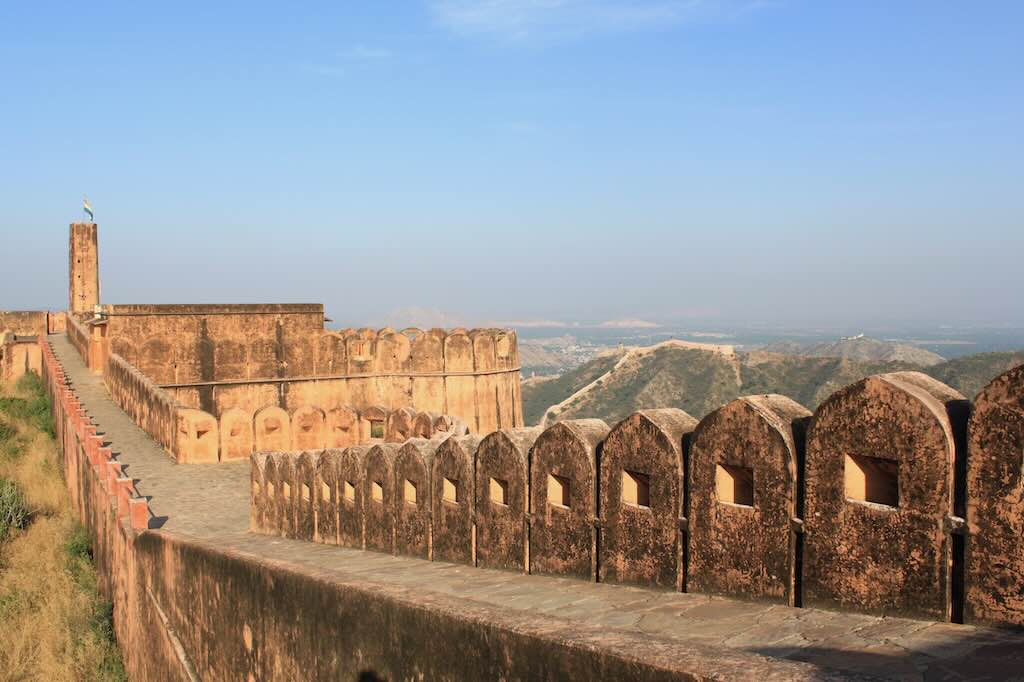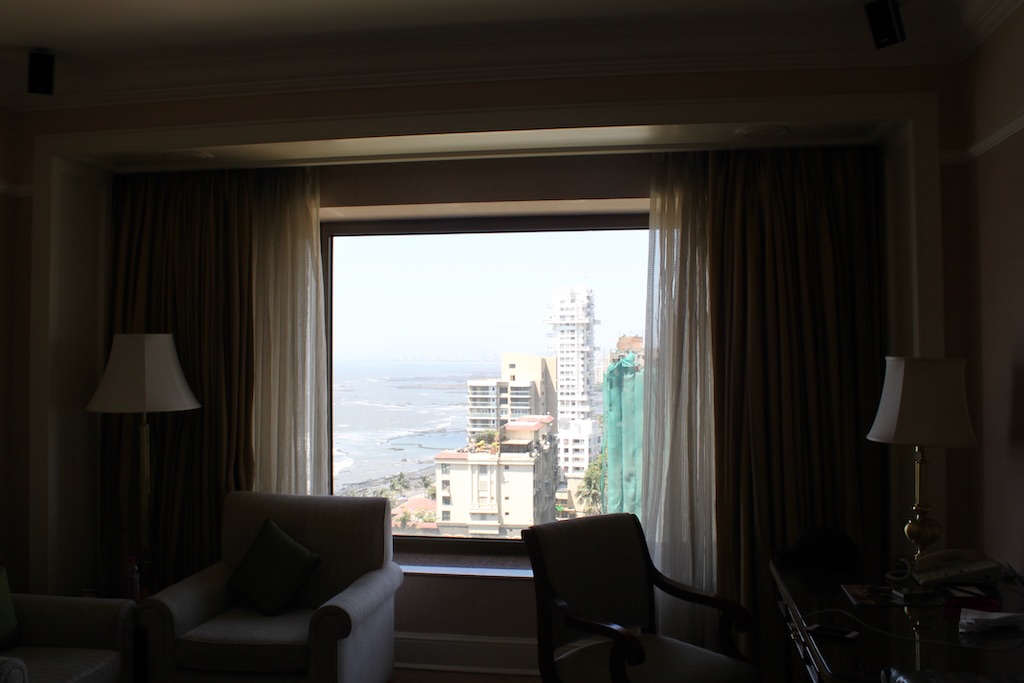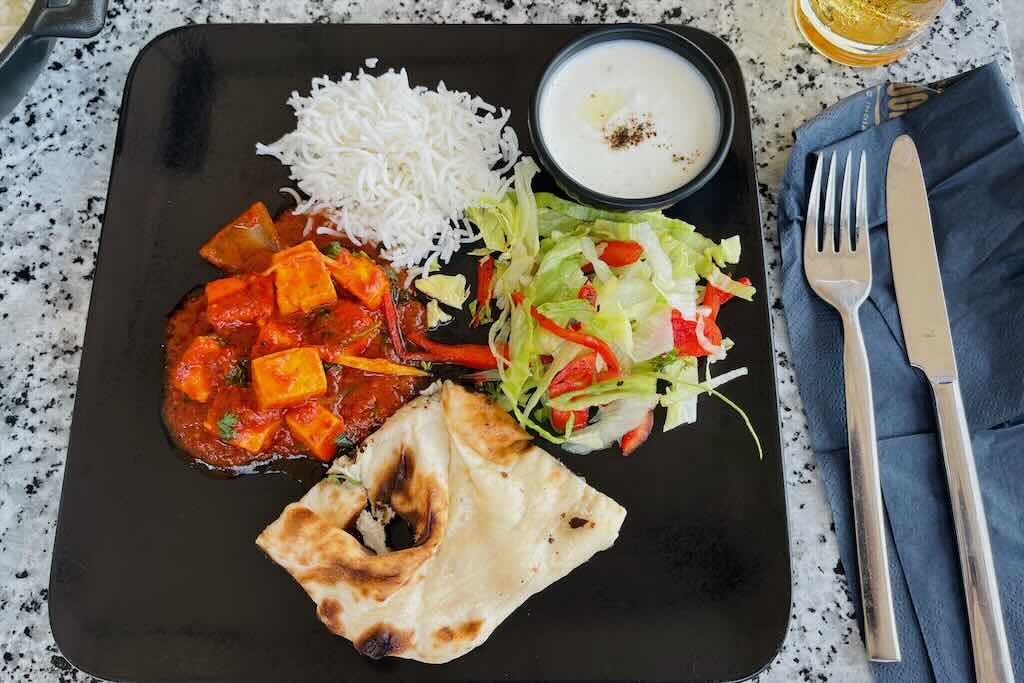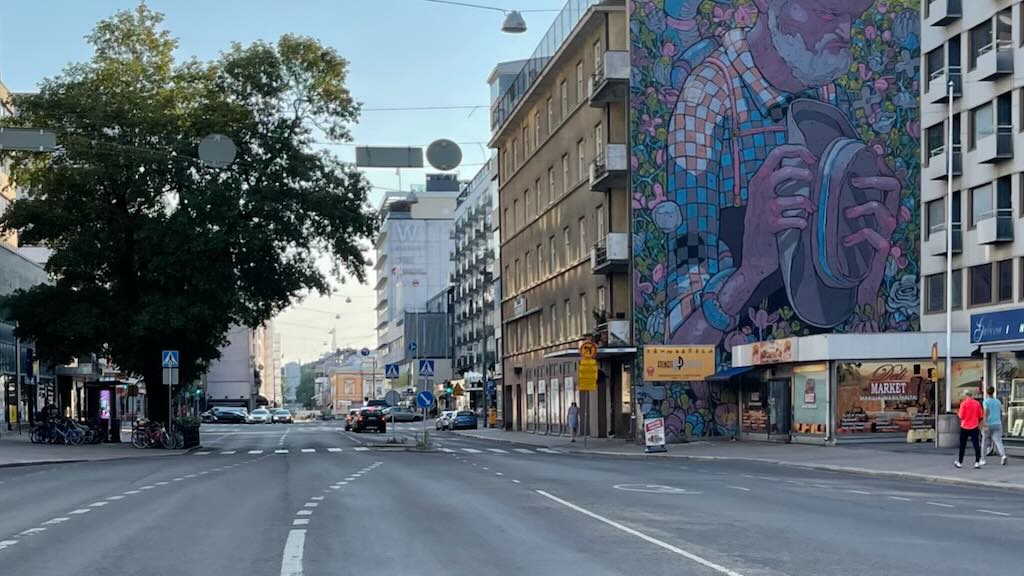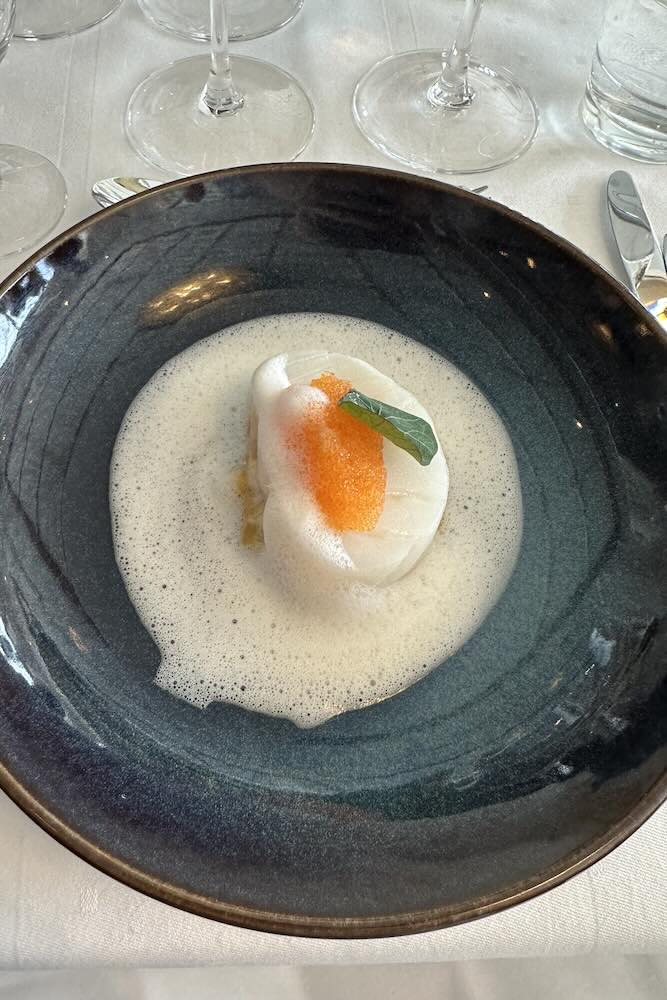Jaipur, the capital city of Rajasthan, India, is fondly referred to as the “Pink City” for its trademark building color. A fusion of regal history, colorful culture, and bustling urbanity, Jaipur is an enchanting mix of historical grandeur and modern vibrancy. Each of its top attractions offers a unique story and an unforgettable experience. Read more about them –

1. Hawa Mahal – The Palace of Winds
- History: Built in 1799 by Maharaja Sawai Pratap Singh.
- Architecture: Made from red and pink sandstone, its façade resembles a honeycomb with 953 small windows.
- Specialty: Designed for royal women to observe daily life without being seen.
Hawa Mahal, an iconic structure built in 1799 by Maharaja Sawai Pratap Singh, stands as a testament to Rajputana architecture. The five-story exterior, resembling a honeycomb, features 953 small windows, known as ‘Jharokhas,’ decorated with intricate latticework. Originally designed for royal ladies to observe street festivals while remaining unseen, it offers breathtaking views of the city and a unique perspective into the royal lifestyle.

2. Amber Fort – A Hilltop Marvel
- Location: Set atop a hill in Amer, 11 kilometers from Jaipur.
- Highlights: Known for Sheesh Mahal, Diwan-e-Aam, and stunning views of Maota Lake.
- Experience: Elephant rides up the hill and light shows in the evening.
Amber Fort, set against the backdrop of the Aravalli Hills, is a marvelous blend of Rajput and Mughal architecture. Built by Maharaja Man Singh I in the late 16th century, the fort is known for its artistic Hindu style elements. The Sheesh Mahal (Mirror Palace) inside the fort is a highlight, with its walls and ceiling adorned with beautiful mirror pieces, showcasing an ingenious play of light.

3. City Palace – Royal Elegance
- Complex: Includes Chandra Mahal and Mubarak Mahal, with a mix of courtyards, gardens, and buildings.
- Museum: Houses royal costumes, weapons, and art.
- Unique Feature: Continues to be a royal residence.
The City Palace, still partly a royal residence, is a splendid example of Rajput and Mughal architectural brilliance. The complex includes Chandra Mahal and Mubarak Mahal, along with various other buildings. The museum here displays royal costumes, armaments, and artworks, offering insights into the rich history of the region.

4. Jantar Mantar – An Astronomical Phenomenon
- Purpose: Built to observe astronomical positions with the naked eye.
- Instruments: Features 19 architectural astronomical instruments, including the Samrat Yantra.
- Recognition: UNESCO World Heritage Site.
Jantar Mantar, an astronomical observatory built by Maharaja Sawai Jai Singh II in the 18th century, is a UNESCO World Heritage Site. It houses the world’s largest stone sundial and a collection of nineteen architectural astronomical instruments. This observatory exemplifies the scientific acumen of an era that meticulously studied celestial bodies.
5. Nahargarh Fort – Overlooking the City
- Construction: Built in 1734 by Maharaja Sawai Jai Singh II.
- Features: Known for its extended wall connecting to Jaigarh Fort and breathtaking city views.
- Culture: Popular spot for Bollywood film shoots.
Perched on the edge of the Aravalli Hills, Nahargarh Fort offers stunning views of Jaipur city. The fort, built in 1734 by Maharaja Sawai Jai Singh II, served as a retreat for the royal family. It’s a perfect spot to witness a mesmerizing sunset and get a panoramic view of Jaipur.

6. Jaigarh Fort – The Fortress of Victory
- Built: In the early 18th century.
- Attractions: Houses the Jaivana Cannon, armory, and a museum.
- Structure: Known for its massive walls and watchtowers.
Jaigarh Fort, perched majestically on the Cheel ka Teela (Hill of Eagles) in the Aravalli range, overlooks the Amber Fort and the Maota Lake near Jaipur. Built in 1726 by Jai Singh II, this imposing structure reflects the military might of the Rajputs. Known for its massive walls, watchtowers, and the world’s largest cannon on wheels, the Jaivana, Jaigarh Fort was a center of artillery production for the Rajputs and a stronghold designed to protect the Amber Fort. Its strategic position, robust architecture, and historical significance make it a fascinating destination for anyone interested in the martial history and architectural ingenuity of Rajasthan.
7. Albert Hall Museum – A Window to Rajasthan’s Heritage
- Architecture: Designed in Indo-Saracenic style, inspired by the Victoria and Albert Museum in London.
- Collections: Includes Egyptian mummies, local arts and crafts.
- Cultural Significance: Hosts various cultural events and festivals.
Albert Hall Museum, renowned as the oldest museum in Rajasthan, stands majestically in the Ram Niwas Garden of Jaipur. This exquisite example of Indo-Saracenic architecture was founded in the late 19th century and is named after King Edward VII (Albert Edward). The museum is celebrated for its rich collection and diverse array of artifacts, ranging from ancient textiles, paintings, and pottery to a captivating Egyptian mummy. The design, featuring domes, arches, and detailed stone ornamentation, reflects a fusion of Indian and English architectural styles. Albert Hall Museum not only preserves the artistic and cultural heritage of Rajasthan but also serves as a window to civilizations from around the world, making it a key destination for history enthusiasts and culture vultures visiting Jaipur.
History and Construction
- Inception: The foundation stone was laid in 1876 during the visit of the Prince of Wales.
- Architectural Design: Designed by Sir Samuel Swinton Jacob, the museum combines elements of English and North Indian architecture, particularly the Indo-Saracenic style.
- Purpose: Initially envisioned as a town hall, it was later decided that it should be a museum for the benefit of the public.
Architectural Highlights
- Structure: The building is a work of art in itself, with its domes, arches, and intricate stone ornamentation.
- Gardens: The museum is surrounded by the lush Ram Niwas Garden, providing a serene backdrop.
Exhibits and Collections
- Diverse Artifacts: The museum houses an extensive collection, including paintings, carpets, ivory, stone, metal sculptures, colorful crystal works, and works of wood and pottery.
- Egyptian Mummy: A significant attraction is an Egyptian mummy, providing a glimpse into ancient Egyptian civilization.
- Local Artistry: Showcases the rich artistic traditions of Rajasthan, including textiles, costumes, jewelry, and works in stone and metal.
- Cultural Melting Pot: The museum not only displays artifacts from Rajasthan but also international collections, symbolizing the blend of various cultures.
- Educational Hub: It plays a crucial role in educating visitors about the history and art of Rajasthan and beyond.

8. Birla Mandir – A Modern Marvel
- Built: In 1988 by the Birla family.
- Design: Constructed in pure white marble, with intricate carvings of Hindu mythology.
- Atmosphere: Known for its serene and peaceful environment.
Birla Mandir, gracefully standing against the backdrop of Jaipur’s skyline, is a modern architectural wonder built entirely of gleaming white marble. Constructed in 1988 by the renowned Birla family, this temple is dedicated to Lord Vishnu and Goddess Lakshmi. Its exquisite craftsmanship showcases intricate carvings depicting various mythological themes and figures from Hindu scriptures. Known for its serene atmosphere and beautiful gardens surrounding it, Birla Mandir is not just a place of worship but also a beacon of peace and spirituality, attracting visitors from all over the world. This temple is a must-visit for those looking to experience a blend of divine tranquility and architectural elegance in the heart of Jaipur.

9. Jal Mahal – The Water Palace
- Era: Built in the 18th century by Maharaja Madho Singh I.
- Design: A fusion of Rajput and Mughal architecture, it appears to float on the lake.
- Access: Only visible from the banks, as entry to the palace is restricted.
Jal Mahal, often hailed as the “Water Palace,” is a striking example of Rajput architecture located in the middle of the Man Sagar Lake in Jaipur. Built in the 18th century by Maharaja Madho Singh I, this five-story building, with four floors submerged underwater, appears to float elegantly on the lake’s surface. Renowned for its harmonious blend of Mughal and Rajput architectural styles, Jal Mahal captivates visitors with its serene setting and majestic appearance. Though the interior of the palace is not accessible to the public, its sand-colored stone walls and picturesque location against the backdrop of the Nahargarh Hills make it a favorite for photographers and sightseers. Jal Mahal remains an iconic symbol of the rich heritage and artistic excellence of Jaipur.
10. Rambagh Palace – A Regal Hotel
- History: Formerly the residence of the Maharaja of Jaipur and then a luxury hotel.
- Features: Opulent rooms, sprawling gardens, and exquisite Rajasthani architecture.
- Luxury: Known for its high-end hospitality and royal experience.
Rambagh Palace: A Legacy of Royal Elegance in Jaipur
Rambagh Palace, once the residence of the Maharajas of Jaipur, is a living testament to royal heritage and luxury. Transformed into a lavish hotel, this grand palace is situated amidst elegantly landscaped gardens in the heart of Jaipur. Originally built in 1835, Rambagh Palace exudes an air of regal history, with its opulent rooms, marbled corridors, and ornate decor reflecting the rich cultural heritage of Rajasthan. The palace’s architecture showcases a blend of Mughal and Rajasthani design, making it a stunning example of royal Indian palaces. Now a premier luxury hotel, Rambagh Palace offers guests an immersive experience into the lifestyle of Indian royalty, combining historical grandeur with modern elegance and comfort.
Useful links:
- Trip to Bollywood – movie guide
- Trip to India – Visual travel guide
- Trip to Goa – Visual travel guide
- Trip to Europe – Visual travel guide
SUBSCRIBER CONTENT
See more images of Jaipur and read all other subscriber content by becoming a Premium Subscriber of indivue.com!

Subscribe to continue reading
Subscribe to get access to the rest of this post and other subscriber-only content.

